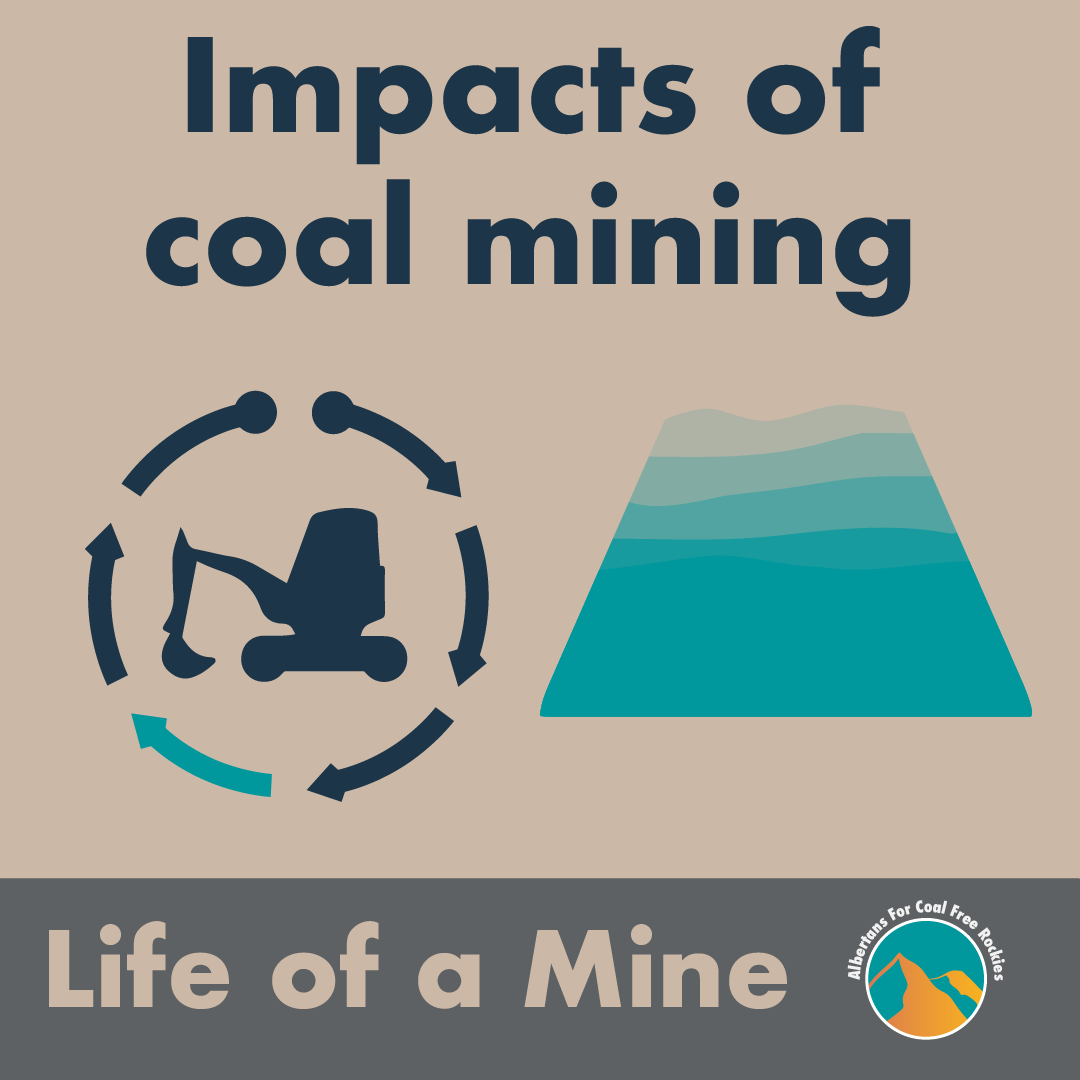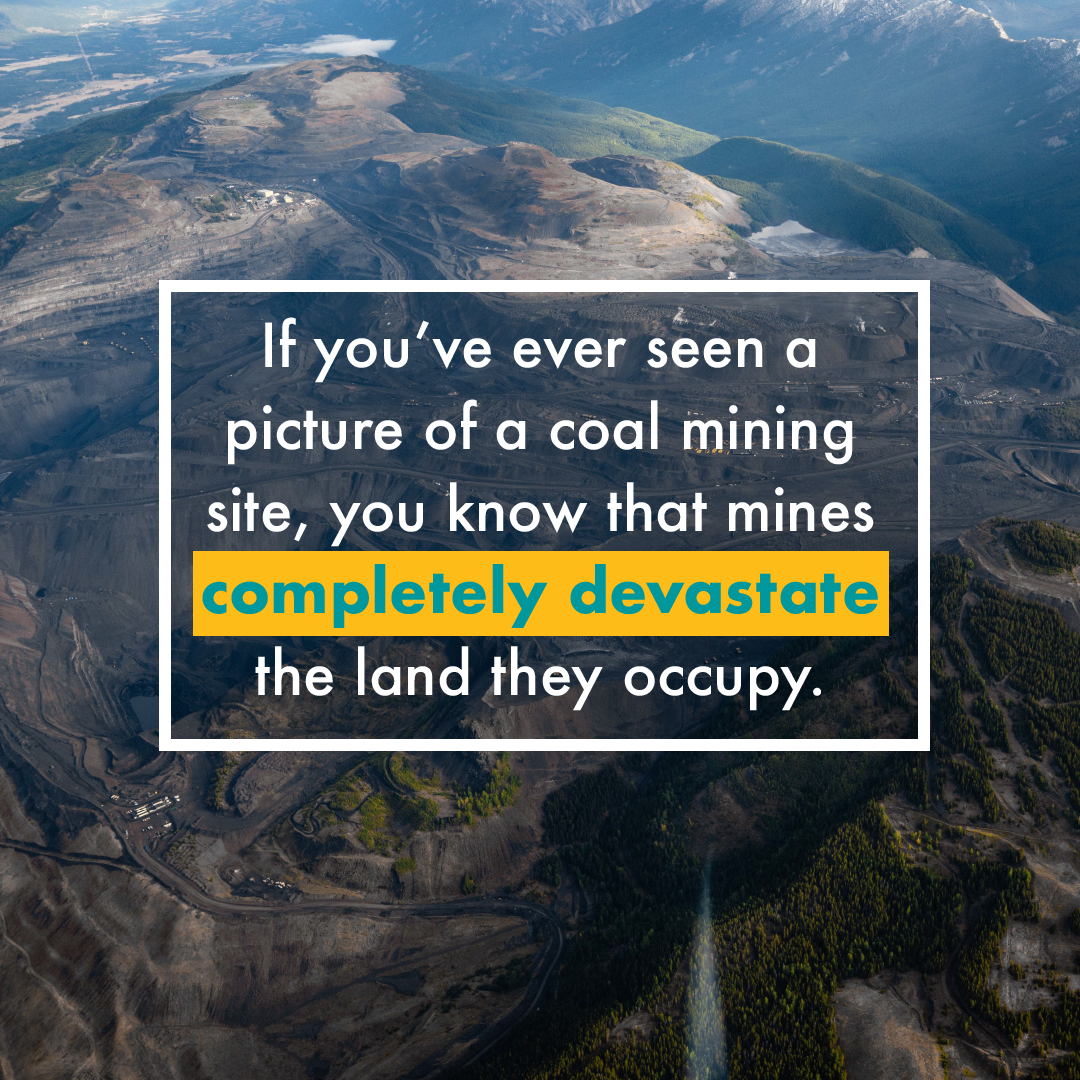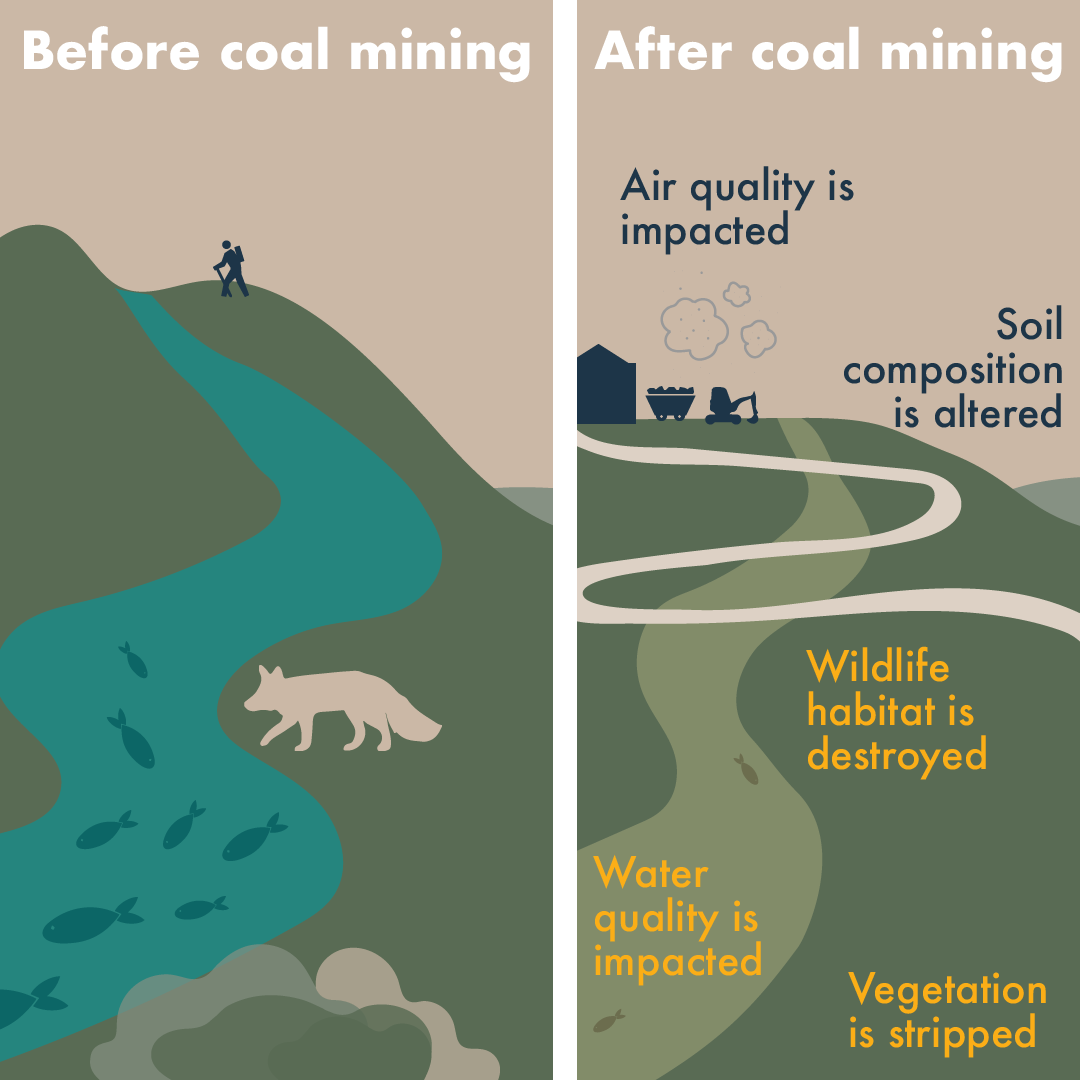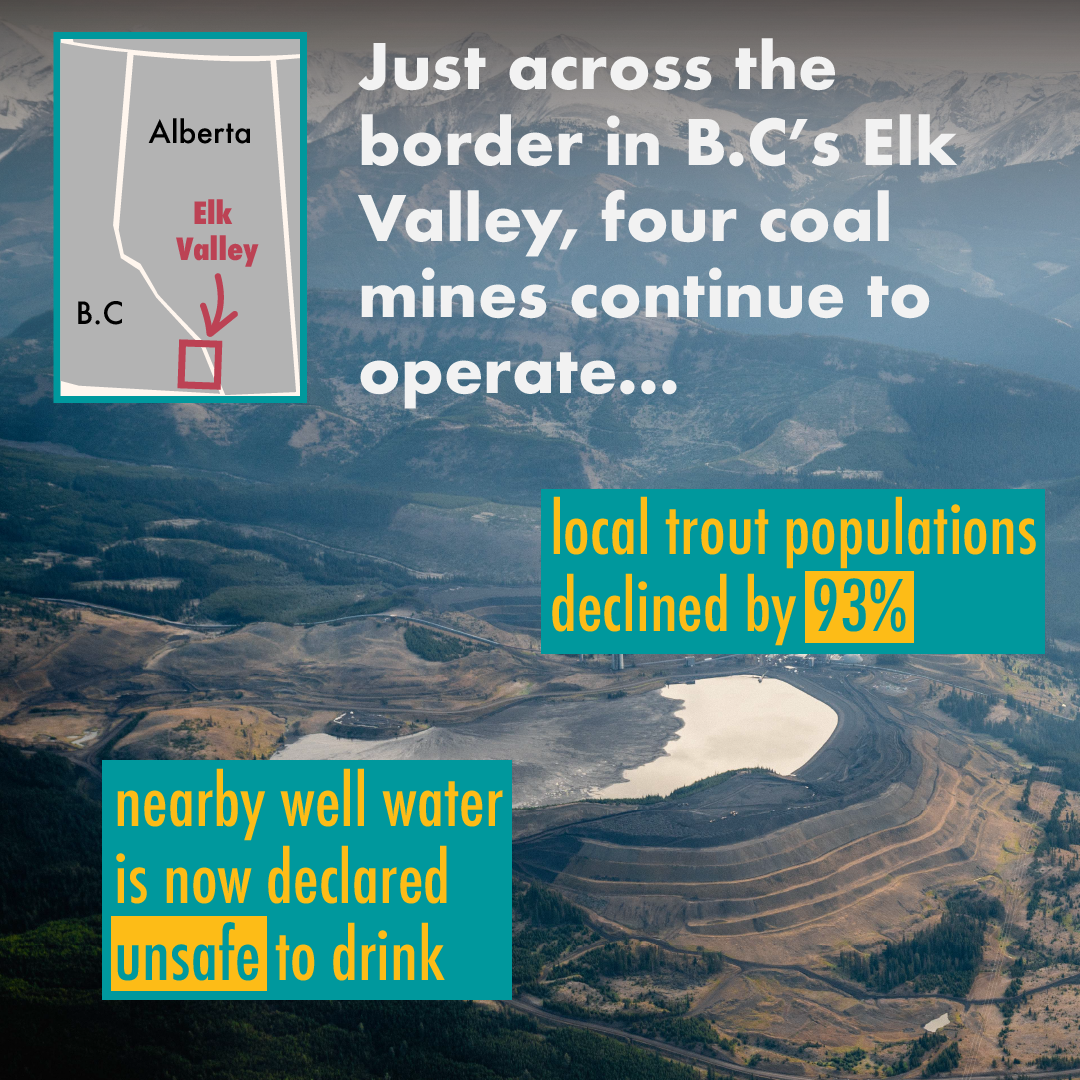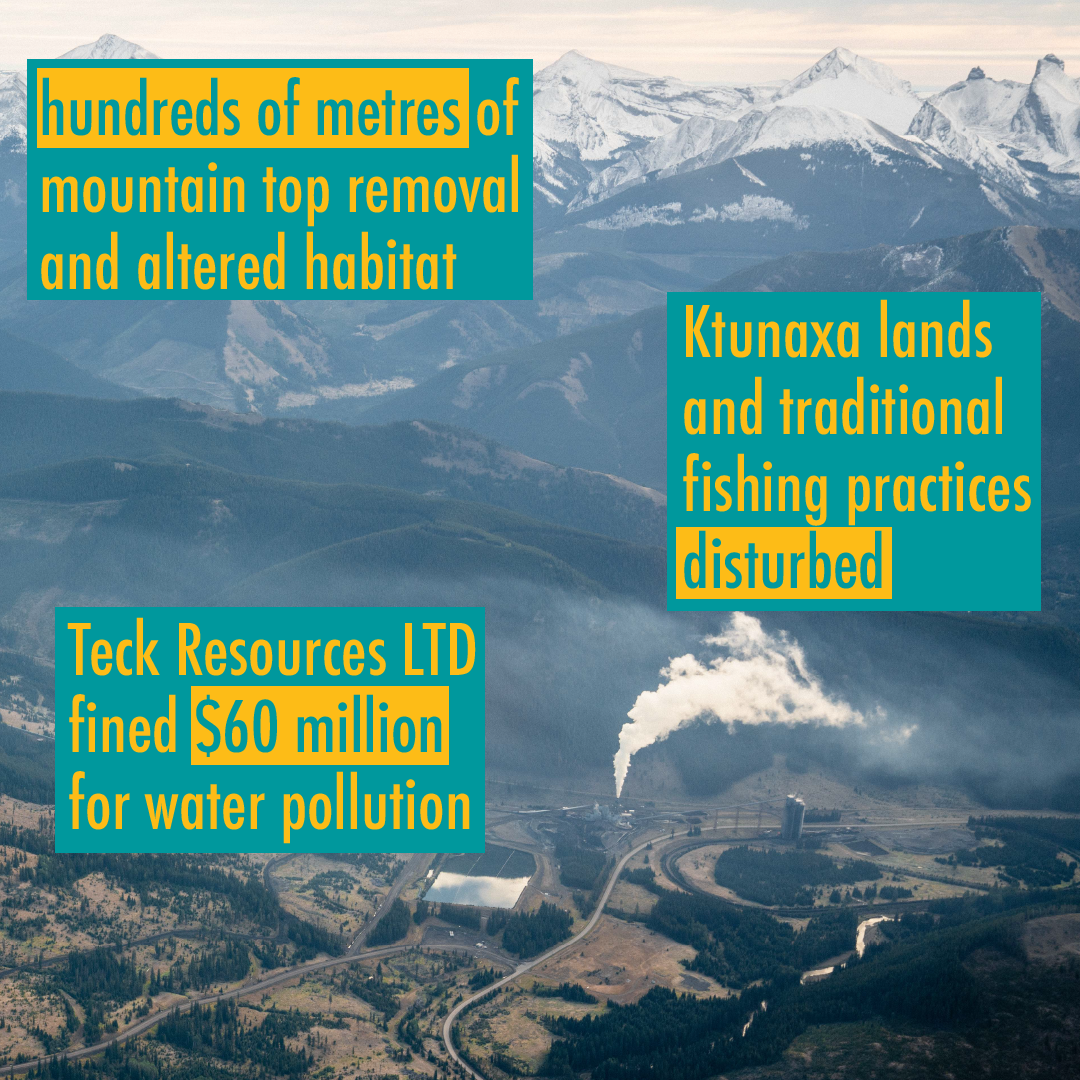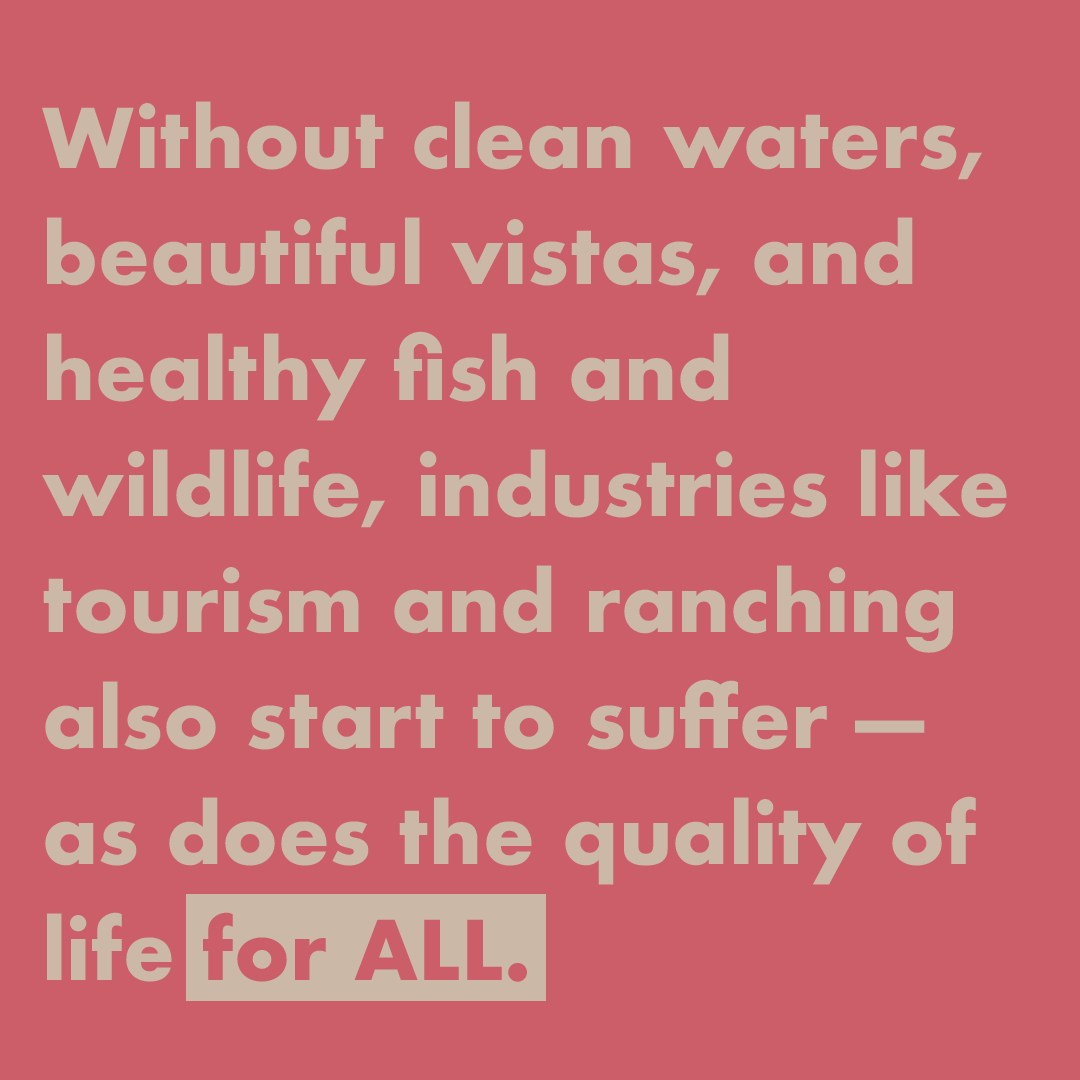Life of a Mine Part 4 - Impacts
In this series we’re going to take you from start to finish through the life of an open-pit coal mine in Alberta. Keep reading below to learn about the exploration activities that take place, or click on one of the other stages below to learn more.
Coal exploration is still happening in Alberta, even though it shouldn’t be
As we learned in Life of a Mine Part 3: Exploration, environmental degradation can happen before a coal mine is even approved for development. Unfortunately, once a coal mine is built and operating, its negative impacts become that much more amplified and difficult to remediate.
If you’ve ever seen a picture of a coal mining site, you know that mines completely devastate the land they occupy —vegetation is stripped, soil composition is altered, and wildlife habitat is destroyed.
But the impacts reach further than just the mine site alone.
Open-pit coal mining activities can contaminate the surrounding waterways. These polluted waters can travel hundreds of kilometers downstream, negatively affecting the health of people, fish, and wildlife along the way.
Without clean waters, beautiful vistas, and healthy fish and wildlife, industries like tourism and ranching also start to suffer —as does the quality of life for ALL Albertans.
Keep reading for a deeper dive on the negative impacts of coal mines on our environments, our health, and our economies. Then join us next time for Part II of Mining Impacts, in which we’ll be focusing on coal mining’s impacts on Indigenous peoples and Treaty rights.
Environmental Impacts
The westslope cutthroat trout above is missing its gill plate which is a common symptom of selenium poisoning.
WATER
#1 Threat: Selenium
The waste rock from open-pit coal mines is saturated with toxic heavy metals, like selenium, that can leach into waterways. Selenium can contaminate waters hundreds of kilometers downstream from the initial mining site, leading to poisoned fish and aquatic birds, and to polluted wells, irrigation systems, and drinking water.
Aren't coal companies required to clean their waste water?
Coal mines do have some remediation processes in place, but unfortunately there is currently no technology that exists at this scale that can effectively render selenium-contaminated waters non-toxic for aquatic life.
Just look at our neighbours to the west...
Due to Teck Resource’s Elk Valley operations in B.C., local trout populations downstream have dropped by 93%. In Sparwood, B.C., Teck’s metallurgical coal mine has made nearby well water unsafe to drink. Incidents like these highlight just how unreliable current remediation processes and technologies are.
WILDLIFE & HABITAT
Coal mining puts many of Alberta’s iconic wildlife species at risk, including grizzly bears, bull trout, and westslope cutthroat trout.
Mining degrades and fragments these wildlife habitats, threatening local populations and negatively impacting biodiversity in the region. Coal mines also create noise pollution, which can impact animals’ patterns of communication, distribution, and foraging.
A full remediation is never a guarantee.
When remediation of these landscapes is possible it often takes 50 to 100 years, and a lot of money, to accomplish. Even then, it’s important to remember that “remediated” land rarely, if ever, achieves the same levels of ecological health and biodiversity as before the mining activity took place. We’ll be doing a deep dive into coal mine reclamation as part of this series, so stay tuned.
CLIMATE CHANGE
Coal, including that used for steel-making, is the most polluting of all fossil fuels.
Methane is released into the atmosphere when coal deposits are exposed, and carbon dioxide is released when coal is burned. Fossil fuels are also released from the machinery and processes involved in coal mining and transportation.
Coal mines use huge amounts of water for operations.
Water use in southern Alberta is already highly restricted due to limited supply, and climate change may limit water supply even further. New coal mines add undue burden to the region’s water supply, and to the communities, First Nations, ranchers, and farmers that rely on it.
Coal mines not only contribute to climate change, but exacerbate its consequences.
Canada’s climate goals include decreasing fossil fuel emissions by 40-45% by 2030, and Alberta has pledged to decrease methane emissions by 45% by 2025. Building new coal mines is counterproductive to these goals.
Social Impacts
Alberta’s natural areas are some of our greatest resources for our physical, mental, and emotional health.
Alberta’s Eastern Slopes are a haven for hiking, camping, fishing, and sightseeing. More than 90% of Albertans prefer to recreate outdoors with family or friends. Our epic vistas, crystal clear waters, and fresh mountain air are a huge part of our identity and quality of life as Albertans, and the backdrop to our favourite memories with loved ones. Coal mines in this region would risk all of this.
If you don’t have your health...
People who live near coal mines are more likely to suffer from certain chronic diseases and cancers due to polluted air and contaminated water. Pollution from these mines affects the health of our children and grandchildren too. Over 90% of Albertans support the contribution of wilderness areas to better local, national, and global air and water quality. Coal mines in this region would go against these beliefs and desires, and negatively impact the health of Albertans.
Economic Impacts
We’ve talked about the negative environmental and social impacts of coal mining, but mitigating those effects comes with a hefty price tag —one that is likely larger than any short-term economic benefits.
Coal mining activity in Elk Valley. Photo: East Cherry, 2021.
Beware of what coal mines promise.
A recent study of three metallurgical coal mines in B.C. found that, between 1999 and 2019, the corporate taxes these mines paid was only 34% of what they promised, and the number of jobs they provided was only 59% of what they anticipated. The volatility of coal prices makes shutdowns and layoffs common —on average, these three mines were closed a third of the time.
Cleaning up their mess is expensive.
In 2000, Smoky River Coal mine in northwestern Alberta went bankrupt, leaving taxpayers with a 6-million-dollar remediation bill. In response to this, the Mine Financial Security Program (MFSP) was created, which requires coal companies to put a deposit down for future reclamation costs. But the long-term costs of remediation are far reaching and the MFSP is not sufficient to cover existing mine reclamation costs never mind those of new mines. Contaminated lands and waters require expensive, decades-long remediation solutions, but also, pollution-caused health problems are an expensive stress on our public health system, and communities whose wells have been rendered undrinkable require costly alternative water sources. Who will pay for all of this?
A risk to other industries.
Alberta’s clean waters and awe-inspiring landscapes are what fuel the province’s 8 billion dollar tourism industry and its reputation as an outdoor adventurer’s paradise. Sullying these landscapes risks harming these more sustainable businesses, and deterring people from moving to, and investing in, our province. The added strain on water allotment and the risk of contamination is also a huge concern for ranchers and farmers in Alberta, whose businesses rely on a clean and available water supply.
Stay Tuned
What we covered today is not a comprehensive list of all the impacts of coal mining in Alberta. In Part II of Life of a Mine: Impacts, we’ll be examining the negative impacts of coal on Indigenous peoples and Treaty rights.
Share your vision for the future of the Eastern Slopes.
Take action today.
